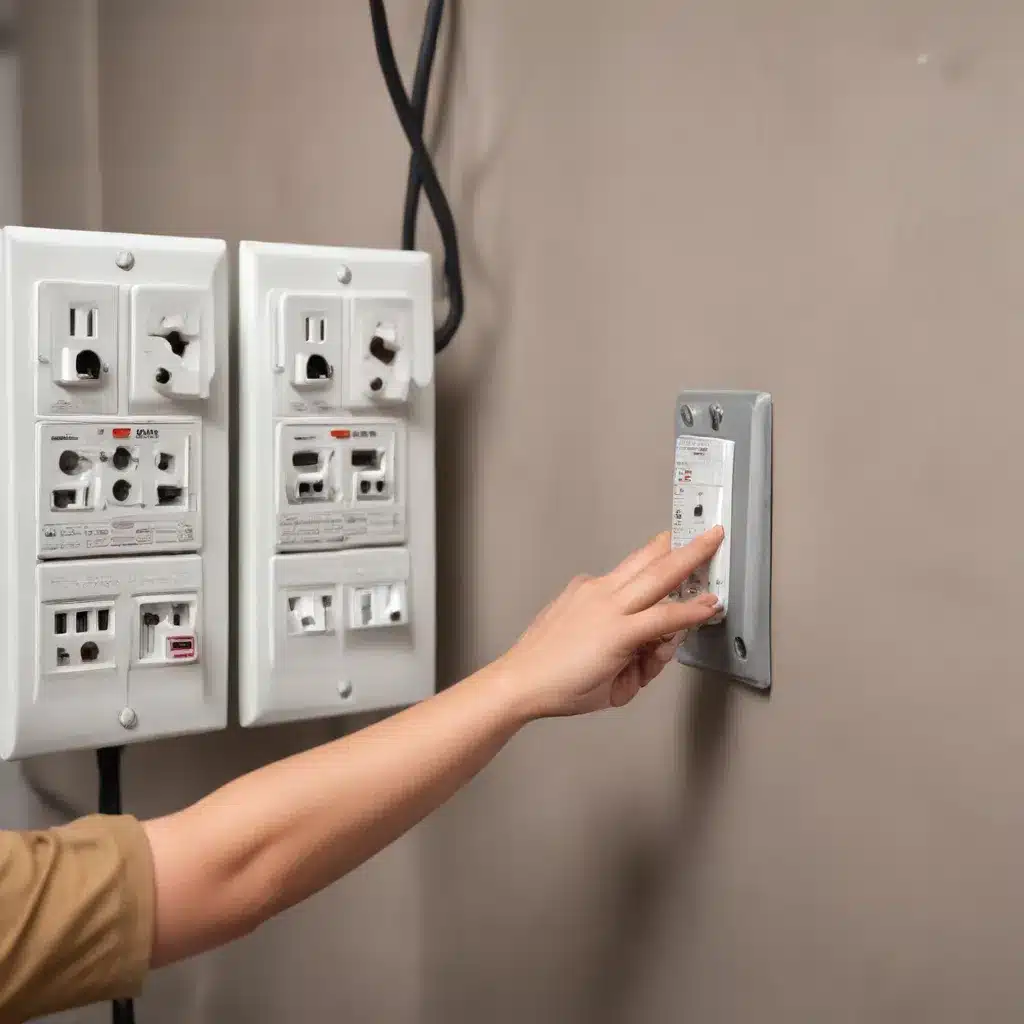
Ensuring a Safe and Efficient Home Electrical System
Electricity powers our modern lives, fueling the appliances, lighting, and devices that make our homes comfortable and convenient. However, without proper care and precaution, electrical systems can pose serious risks to the safety of you and your family. As a seasoned electrical expert, I’m here to provide you with a comprehensive electrical safety checklist to help you protect your home and loved ones.
Staying Vigilant with Electrical Maintenance
Regularly inspecting and maintaining your home’s electrical system is crucial for preventing dangerous fires and accidents. Start by ensuring all outlets are cool to the touch and have functioning, uncracked faceplates. Damaged power cords can be a significant fire hazard, so carefully examine all cords for signs of fraying or cracking, and replace them promptly if needed. Avoid the temptation to run cords under rugs or furniture, as this can damage the insulation and lead to overheating.
One of the most common electrical safety risks is overloading outlets. Routinely check your outlets to ensure they are not being asked to handle too much power – if they feel warm to the touch or are sparking, it’s a sure sign that you need to redistribute the electrical load. Consider having a qualified electrician install additional outlets in high-use areas to alleviate the strain on your system.
Harnessing the Power of Sustainable Energy Solutions
As we strive to create a more eco-friendly future, sustainable energy solutions have become increasingly important. Incorporating renewable energy sources, such as solar panels or wind turbines, can not only reduce your carbon footprint but also provide long-term cost savings on your electricity bills. When exploring sustainable energy options, be sure to consult with experienced professionals who can guide you through the installation process and ensure your system is safe and up to code.
Energy-efficient appliances are another key component of a sustainable home. Look for the ENERGY STAR® label when shopping for new refrigerators, washing machines, and other household devices. These products are designed to consume less energy without sacrificing performance, helping you save money on utility costs while reducing your environmental impact.
Embracing the Convenience of Smart Home Technology
The smart home revolution has brought us a wealth of innovative devices that can enhance the safety, security, and efficiency of our living spaces. Smart thermostats, for example, can automatically adjust temperatures based on your family’s schedule, optimizing energy usage and reducing your carbon footprint. Wi-Fi-enabled smoke detectors and carbon monoxide alarms can provide real-time alerts to your smartphone, allowing you to respond quickly to potential emergencies.
When integrating smart home devices, be mindful of electrical safety. Ensure that any new appliances or gadgets are compatible with your home’s electrical system and follow the manufacturer’s instructions for proper installation and use. Keep in mind that while smart home technology can offer tremendous convenience, it’s essential to maintain a strong understanding of your home’s electrical infrastructure to avoid overloading circuits or creating potential fire hazards.
Empowering Yourself with Safe DIY Electrical Projects
For the more adventurous homeowners, undertaking simple DIY electrical projects can be a rewarding and cost-effective way to maintain your home’s electrical system. However, it’s crucial to approach these tasks with caution and adhere to safety best practices. Always turn off the power to the affected circuit before beginning any work, and never attempt to modify or repair electrical components unless you have the necessary skills and knowledge.
When it comes to electrical work, it’s better to err on the side of caution. If you’re unsure about the complexity of a project or feel uncomfortable tackling it yourself, it’s wise to enlist the help of a licensed and experienced electrician. Their expertise can ensure your home’s electrical system remains safe, efficient, and up to code.
Preparing for Electrical Emergencies
No matter how diligent you are with electrical maintenance and safety, unforeseen emergencies can still occur. Be proactive in your preparation by keeping a well-stocked emergency kit that includes flashlights, batteries, and a portable power source. Additionally, familiarize yourself with the location of your home’s main electrical panel and breakers, so you can quickly respond to power outages or other electrical issues.
In the event of a severe storm or natural disaster, it’s essential to follow recommended safety protocols. Avoid touching any downed power lines, and if you must evacuate your home, unplug all electrical devices and appliances to prevent damage from power surges. By being prepared for electrical emergencies, you can protect your family and minimize the impact of unexpected events.
Conclusion: Empowered Electrical Safety
Maintaining a safe and efficient home electrical system is vital for the well-being of you and your loved ones. By following the comprehensive electrical safety checklist outlined in this article, you can significantly reduce the risk of fires, electrocution, and other hazards. Remember, your home’s electrical infrastructure is the foundation that powers your daily life, so it’s worth the investment to ensure it is well-maintained and up to the task.
If you have any lingering questions or concerns about your home’s electrical system, I encourage you to reach out to the Volt Watt Electric team. Our experts are dedicated to providing personalized guidance and support to help you create a safer, more sustainable living environment. Take the first step towards electrical peace of mind – your family’s safety is worth it.

